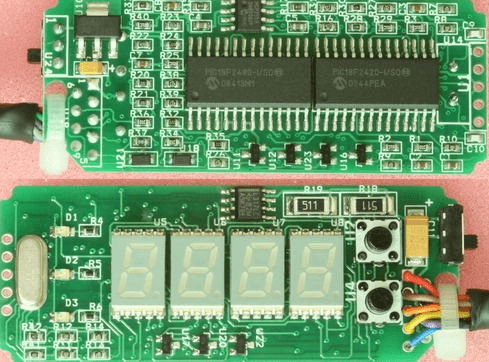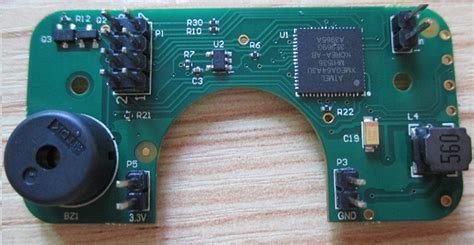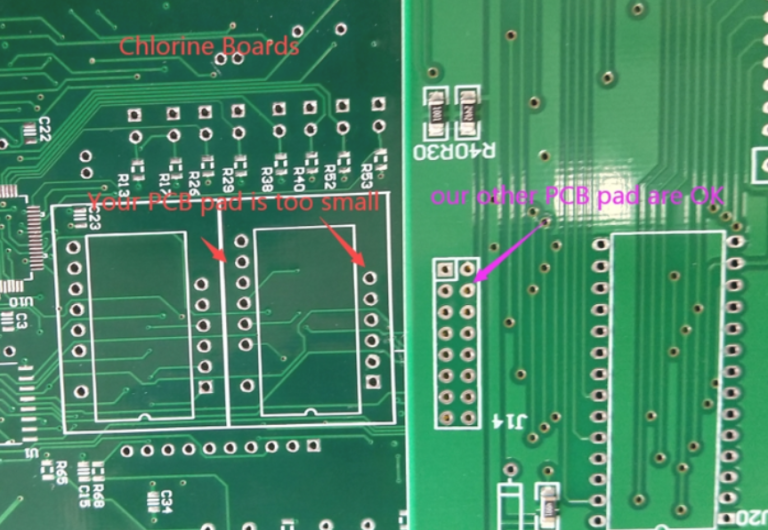Key Design Considerations for Determining PCB Trace Temperature
Introduction
Printed Circuit Board (PCB) trace temperature is a critical factor in electronic design that directly impacts reliability, performance, and safety. As electronic devices continue to shrink in size while increasing in power density, understanding and controlling trace temperatures has become more challenging yet more essential than ever. This article examines the primary design considerations that influence PCB trace temperature, providing engineers with a comprehensive framework for thermal management in circuit board design.
Proper thermal design prevents numerous potential issues including premature aging of materials, intermittent connections, complete circuit failure, and in extreme cases, fire hazards. The temperature of PCB traces depends on a complex interplay of electrical, material, and environmental factors that designers must carefully balance. By addressing these considerations early in the design process, engineers can create robust, reliable PCBs that meet performance requirements throughout their intended lifespan.
1. Current Carrying Capacity and Trace Dimensions
1.1 Current Density and Temperature Rise
The fundamental relationship between current flow and temperature rise forms the basis of PCB thermal design. When current passes through a conductor, resistive heating occurs according to Joule’s first law (Q = I²Rt). The temperature increase depends on:
- Current magnitude (I)
- Trace resistance (R)
- Duration of current flow (t)
- Thermal dissipation characteristics
The IPC-2152 standard provides guidelines for determining current-carrying capacity based on allowable temperature rise. Designers must select an appropriate temperature rise limit (typically 10°C, 20°C, or 30°C above ambient) based on application requirements.
1.2 Trace Width and Thickness
Trace cross-sectional area directly affects both electrical resistance and heat dissipation:
- Width: Wider traces reduce resistance and provide more surface area for heat dissipation
- Thickness: Thicker copper layers (measured in oz/ft²) decrease resistance but may increase manufacturing costs
- Aspect ratio: Very narrow, thick traces may concentrate heat more than wide, thin ones
A common misconception is that doubling trace width exactly halves the temperature rise. In reality, the relationship is more complex due to non-linear thermal effects.
1.3 Length Considerations
While trace length contributes to total resistance, its effect on temperature is often secondary to width and thickness:
- Short traces may experience less overall heating but could have higher current density
- Long traces distribute heat over greater area but accumulate more total heat
- Voltage drop considerations may constrain length before temperature does

2. PCB Material Properties
2.1 Copper Characteristics
The copper used in PCB traces has several relevant properties:
- Electrical resistivity: 1.68×10⁻⁸ Ω·m at 20°C
- Temperature coefficient of resistance: +0.0039/°C
- Thermal conductivity: 401 W/(m·K)
These values change with temperature and copper purity, affecting thermal performance.
2.2 Dielectric Material Selection
The PCB substrate material significantly influences thermal performance:
- Thermal conductivity: Ranges from 0.2 W/(m·K) for FR-4 to over 50 W/(m·K) for specialized ceramics
- Glass transition temperature (Tg): Higher Tg materials (170°C+) withstand more heat without deformation
- Coefficient of thermal expansion (CTE): Mismatches with copper can cause mechanical stress during heating
2.3 Layer Stackup Configuration
Multilayer boards present additional thermal considerations:
- Internal traces dissipate heat less efficiently than external ones
- Power planes can act as heat spreaders
- Dielectric thickness affects heat transfer between layers
- Via arrangements can enhance or impede thermal pathways
3. Environmental and Operational Factors
3.1 Ambient Temperature
The surrounding environment establishes the baseline for temperature rise:
- High ambient temperatures leave less margin for additional heating
- Design standards often reference 20-25°C as nominal ambient
- Real-world applications may experience much higher ambient temperatures
3.2 Airflow and Cooling Conditions
Heat removal mechanisms dramatically affect trace temperatures:
- Natural convection: Minimal airflow, typical of enclosed devices
- Forced air: Fans or external airflow enhance cooling
- Liquid cooling: Rare for traces specifically but used in high-power systems
- Radiation: Becomes significant at very high temperatures
3.3 Altitude and Pressure
At higher altitudes:
- Reduced air density decreases convective cooling
- Lower atmospheric pressure may affect dielectric strength
- Thermal design margins may need increasing

4. Adjacent Trace and Component Effects
4.1 Proximity Heating
Nearby heat sources contribute to trace temperature:
- Other current-carrying traces
- Power components (voltage regulators, power transistors)
- High-frequency components with significant losses
- Dense component placement restricting airflow
4.2 Thermal Coupling
Traces in multilayer boards affect each other:
- Parallel traces on adjacent layers may share heat
- Crossing traces at right angles have minimal interaction
- Power planes can spread heat across large areas
4.3 High-Frequency Effects
At high frequencies:
- Skin effect increases effective resistance
- Dielectric losses become significant
- Proximity effects alter current distribution
- These factors all contribute to additional heating
5. Design Techniques for Temperature Control
5.1 Trace Geometry Optimization
Advanced trace shapes can improve thermal performance:
- Tapered traces for varying current requirements
- Curved corners instead of sharp angles
- Thermal relief patterns for component connections
- Filled areas for high-current paths
5.2 Thermal Vias and Heat Sinking
Strategic use of vias can enhance cooling:
- Arrays of thermal vias under hot components
- Connection to internal ground/power planes
- Connection to external heatsinks when available
- Via fill materials with high thermal conductivity
5.3 Copper Pour and Planes
Large copper areas help with heat dissipation:
- Flooded ground planes act as heat spreaders
- Strategic copper fills near hot traces
- Balanced copper distribution to prevent warping
- Proper clearance for high-voltage isolation
6. Verification and Analysis Methods
6.1 Analytical Calculations
Basic temperature estimation methods:
- IPC-2152 formulas for standard conditions
- Ohm’s Law and power calculations
- Thermal resistance network modeling
- Finite difference approximations
6.2 Simulation Tools
Advanced thermal analysis software offers:
- 3D finite element analysis (FEA)
- Coupled electrical-thermal simulation
- Computational fluid dynamics (CFD) for airflow
- Transient thermal analysis
6.3 Empirical Testing
Physical verification methods:
- Infrared thermography
- Thermocouple measurements
- Thermal test dies and monitors
- Accelerated life testing
Conclusion
Determining PCB trace temperature requires careful consideration of multiple interacting factors. Current magnitude and trace geometry establish the fundamental heating characteristics, while material properties and board construction determine how that heat dissipates. Environmental conditions and adjacent components then modify the thermal performance in the final application. By systematically addressing each of these considerations—from initial current calculations to final thermal verification—designers can ensure reliable operation throughout the product lifecycle.
Modern electronic devices continue to push the limits of power density, making thermal management an increasingly critical aspect of PCB design. The most successful designs will employ a combination of analytical techniques, simulation tools, and empirical validation to optimize trace temperatures. As new materials and manufacturing techniques emerge, designers must continually update their approaches to thermal design while maintaining compliance with relevant safety standards.
Ultimately, understanding and controlling PCB trace temperature is not just about preventing failure—it’s about enabling innovation by safely pushing the boundaries of what’s possible in electronic design. By mastering these design considerations, engineers can create products that are simultaneously more powerful, more compact, and more reliable than ever before.







